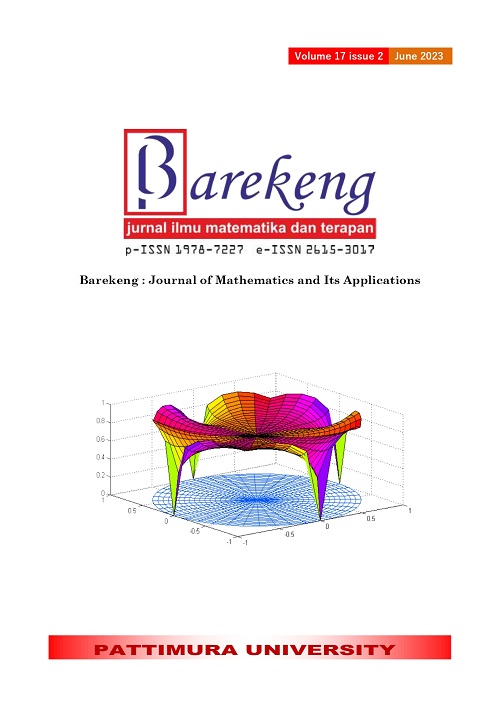DESIGN OF STUDENT SUCCESS PREDICTION APPLICATION IN ONLINE LEARNING USING FUZZY-KNN
Abstract
Effective evaluation of student performance is crucial. Hence, many kinds of techniques are used such as statistics, physical examination and currently data mining techniques to evaluate student performance. Data mining techniques as known as Educational Data Mining (EDM) collect, process, report and used to find the unseen patterns in the student dataset. EDM uses machine learning techniques to dig out useful data from multiple levels of meaningful hierarchy. Various data from intelligent computer tutors, classic computer based educational systems, online classes, academic data in educational institution, and standar assesment can be process for EDM. This led universities include open and distance learning (ODL) to collect large volume of student and learning data in their learning management systems (LMS). Students in ODL are relatively familiar with LMS and many learning activities such as number of accessing materials, student participation in discussion forum recorded in LMS. The processes of using EDM to improve the quality of educational policy maker with data-based models have become a challange that institutions of higher education face today. Therefore, this study aims to design applications that predict student performance in online learning using machine learning techniques based on EDM. The machine learning technique used in this research is Fuzzy-KNN. Testing using Fuzzy-KNN produces an accuracy of 92.5%.
Downloads
References
K. A. Razak, T. Norhayati, T. Othman, M. I. Hamzah, and H. Zulkifli, “Information and Communication Technology among Excellent Islamic Education Teachers in Selangor Malaysia,” International Education Studies, vol. 7, no. 13, 2014, doi: 10.5539/ies.v7n13p146.
S. Dhawan, “Online Learning: A Panacea in the Time of COVID-19 Crisis,” Journal of Educational Technology Systems, vol. 2020, no. 1, pp. 5–22, doi: 10.1177/0047239520934018.
“The Impact of E-Learning Technologies on Student’s Motivation: Student Centered Interaction in Business Education,” International Journal of Research in Tourism and Hospitality, vol. 6, no. 2, 2020, doi: 10.20431/2455-0043.0601002.
D. Spencer and T. Temple, “Examining students’ online course perceptions and comparing student performance outcomes in online and face-to-face classrooms,” Online Learning Journal, vol. 25, no. 2, pp. 233–261, 2021, doi: 10.24059/olj.v25i2.2227.
M. Chakraborty and F. Muyia Nafukho, “Strengthening student engagement: What do students want in online courses?,” European Journal of Training and Development, vol. 38, no. 9, pp. 782–802, Oct. 2014, doi: 10.1108/EJTD-11-2013-0123.
S. Anastassia Amellia Kharis and A. Haqqi Anna Zili, “Learning Analytics dan Educational Data Mining pada Data Pendidikan,” Jurnal Riset Pembelajaran Matematika Sekolah, vol. 6, 2022.
M. A. Chatti, A. L. Dyckhoff, U. Schroeder, and H. Thüs, “IJTEL)-Special Issue on "State-of-the-Art in TEL.” [Online]. Available: https://tekri.athabascau.ca/analytics/
N. Sclater, A. Peasgood, and J. Mullan, “Learning Analytics in Higher Education A review of UK and international practice Full report,” 2016.
W. Greller and H. Drachsler, “International Forum of Educational Technology & Society Translating Learning into Numbers: A Generic Framework for Learning Analytics,” Source: Journal of Educational Technology & Society, vol. 15, no. 3, pp. 42–57, 2012, doi: 10.2307/jeductechsoci.15.3.42.
G. Siemens et al., “Open Learning Analytics: an integrated & modularized platform Proposal to design, implement and evaluate an open platform to integrate heterogeneous learning analytics techniques Project Overview,” 2011. [Online]. Available: www.solaresearch.org
Z. J. Kovačić, “Early Prediction of Student Success: Mining Students Enrolment Data.”
O. J. Oyelade, O. O. Oladipupo, and I. C. Obagbuwa, “Application of k-Means Clustering algorithm for prediction of Students’ Academic Performance,” 2010. [Online]. Available: http://sites.google.com/site/ijcsis/
F. Okubo, A. Shimada, T. Yamashita, and H. Ogata, “A neural network approach for students’ performance prediction,” in ACM International Conference Proceeding Series, Mar. 2017, pp. 598–599. doi: 10.1145/3027385.3029479.
P. Dehning, K. Lubinetzki, S. Thiede, and C. Herrmann, “Achieving Environmental Performance Goals - Evaluation of Impact Factors Using a Knowledge Discovery in Databases Approach,” in Procedia CIRP, 2016, vol. 48, pp. 230–235. doi: 10.1016/j.procir.2016.03.108.
T. M. Mohamed, “Pulsar selection using fuzzy knn classifier,” Future Computing and Informatics Journal, vol. 3, no. 1, pp. 1–6, Jun. 2018, doi: 10.1016/j.fcij.2017.11.001.
M. el Bakry, S. Safwat, and O. Hegazy, “Big Data Classification using Fuzzy K-Nearest Neighbor,” 2015.
Copyright (c) 2023 Selly Anastassia Amellia Kharis, Gatot Fatwanto Hertono, Endang Wahyuningrum, Yumiati Yumiati, Sam Rizky Irawan, T Ahmad Danial, Dimas Septian Saputra

This work is licensed under a Creative Commons Attribution-ShareAlike 4.0 International License.
Authors who publish with this Journal agree to the following terms:
- Author retain copyright and grant the journal right of first publication with the work simultaneously licensed under a creative commons attribution license that allow others to share the work within an acknowledgement of the work’s authorship and initial publication of this journal.
- Authors are able to enter into separate, additional contractual arrangement for the non-exclusive distribution of the journal’s published version of the work (e.g. acknowledgement of its initial publication in this journal).
- Authors are permitted and encouraged to post their work online (e.g. in institutional repositories or on their websites) prior to and during the submission process, as it can lead to productive exchanges, as well as earlier and greater citation of published works.






1.gif)



